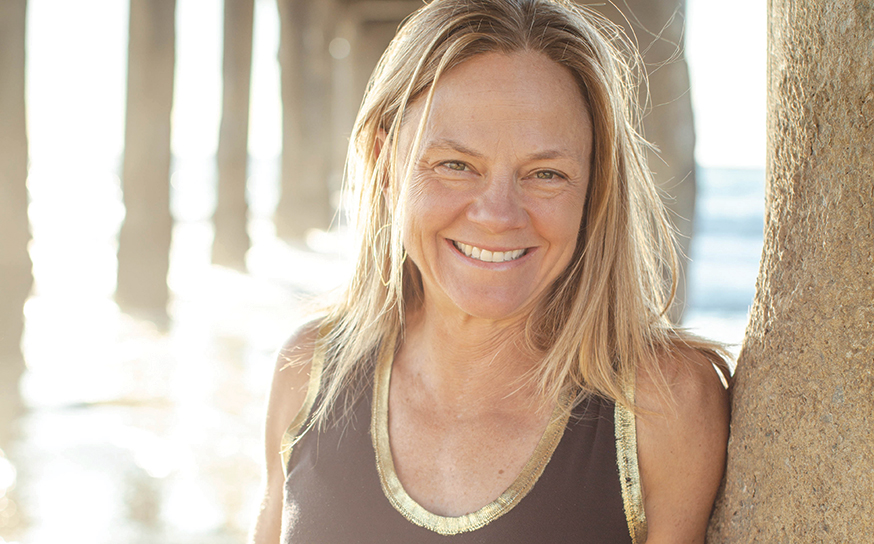These South Bay parents are changing it up and educating their kids at home
A closer look at homeschooling.
- CategoryPeople
- Written byDiane E. Barber
- Illustrated byChristine Georgiades
The concept of homeschooling children often conjures up controversy and misconceptions of protective helicopter parents with socially challenged kids who are unprepared for “real life.” As the saying goes, do not judge a book by its cover.
Some of the world’s most brilliant minds, great leaders, renowned artists, authors and athletes have been homeschooled–from legendary figures like George Washington, Leonardo da Vinci, Alexander Graham Bell, Orville Wright and Wilbur Wright, Albert Einstein, Helen Keller, Joan of Arc, Isaac Newton, Will Rogers and Katharine Hepburn to modern-day notables such as Serena Williams and Venus Williams, Misty Copeland, Taylor Swift and Justin Timberlake.
Educating children at home has been done globally for centuries and domestically since the colonization of our country. With the addition of the Tenth Amendment to the Constitution in 1791, the education system in the U.S. was decentralized with oversight powers reserved for the people and the states. Historians estimate that by the late 1800s about 65% of school-aged children attended public schools, while the others were homeschooled.
In 1904 an Indiana state appellate court ruled that a school was “a place where instruction is imparted to the young” and that “a school at home counts as a private school” (State v. Peterman). This was a win for homeschooling advocates nationally, as society and state officials pushed harder for public schooling to be the norm.
By 1970 public school attendance far surpassed home-based learning—so much so that homeschooling was deemed to be almost nonexistent. According to the U.S. Department of Education, approximately 87% of kids in the U.S. were enrolled in public schools at that time, while the majority of the other students attended private schools.
But in response to concerns about the influence of pop culture on American youth and parental disillusionment with state-run schools, a shift back to homeschooling eventually began. In the mid-‘70s the theory of unschooling and child-led learning began to take hold in the U.S.
John Holt, a Yale-educated teacher, youth advocate and author, was at the forefront of the modern homeschool movement of this era in the wake of his books, How Children Fail, How Children Learn and Instead of Education: Ways to Help People Do Things Better, which were based on his theory that rote-style learning and a child’s desire to please a teacher quashed natural curiosity and authenticity. The books and his newsletter (Growing Without Schooling) were lauded by parents and educators nationally.
On the heels of Holt’s and other advocates’ works, there was an upsurge in homeschooling in the decades to follow. By 2016 the National Home Education Research Institute estimated that 2.3 million kids were homeschooled in the U.S.
There are numerous reasons that parents elect to homeschool in the South Bay and throughout the U.S. The most common are religious and moral beliefs, educational philosophies, medical circumstances (including the vaccine mandate in California), curriculum flexibility, adaptability to specific learning styles, a preference for one-on-one education and concerns about bullying and other social influences.
Navigating the complexities of the homeschooling world without one central governing body (such as the state for public schools) can be overwhelming. But parental convictions and passion light the way to great resources and options in the community.
Homeschooling is typically done through public-funded charters (such as Valiant Preparatory, Inspire Charter Schools and iLEAD Schools), private schools, independent study programs and by creating a private home-based school, which requires obtaining a Private School Affidavit (PSA) through the California Department of Education. Methods and styles of homeschooling vary tremendously, including interest-led (unschooling), computer-based, Montessori, Charlotte Mason method, eclectic, unit studies (many subjects under one topic) and block scheduling versus subject transitioning. The daily time commitment for each student varies by grade, focus, subjects and scheduling (typically two to four hours for lower and mid-grades and three to six hours for upper grades).
One of the most common questions asked of parents who homeschool is, “What about socialization?” Children in public and private schools are primarily socialized with other children of the same age. Homeschooled children on the other hand regularly socialize with children and adults of all ages.
“I learn a lot faster at home than at regular school because I do not have to wait for the rest of the class to catch up. And when I finish, I have a lot more time for other things.”
Opportunities to make friends and develop social skills through homeschool networks and by simply being out in the world day-to-day are limitless, including homeschool-specific classes at South Bay L.A. Learning Center, weekly group gatherings, park days, volunteer work, church groups, field trips, after-school classes, organized sports, book clubs, art and music classes, and community service projects. In many instances, homeschooled children are more socialized than those who are in public and private schools due in part to flexible schedules and networking.
The Pooler family joined Inspire Charter Schools when they moved to the South Bay from Texas in 2017. Much to the surprise of the professional educators in their families (both parents were raised by teachers), Lori homeschooled their two elementary school-aged daughters for nearly four years in Texas through a local charter and opted to continue the kids’ home-based education upon arriving in Los Angeles.
“My husband and I chose homeschooling in Texas because of our preference for faith-based learning and our disenchantment with the large classrooms and limited staffing resources in the community’s public schools,” shares Lori. “When we arrived here, we took an ‘If it is not broken don’t fix it’ approach and continued homeschooling through Inspire. Initially we had pushback from our families when we started because they did not fully understand it, but now they are supportive.”
 Lori’s passion for learning and teaching are the driving forces behind her stay-at-home-mom commitment to their daughters (now 10 and 12 years old). Of particular importance to the Poolers is individualized learning for their girls.
Lori’s passion for learning and teaching are the driving forces behind her stay-at-home-mom commitment to their daughters (now 10 and 12 years old). Of particular importance to the Poolers is individualized learning for their girls.
“I wanted to formulate an educational plan that focused on our kids’ strengths and provide them with the individual attention that they would not receive in a public school setting,” she says. “I like steering the ship of educational content and flow. Inspire allows us to have a mix of online and textbook learning with a teacher to guide us. The charter also supplies us with funds to help offset costs.”
The flexibility of homeschooling is also key for her family who loves to travel and spend quality time with visiting friends and family members. Outings to local attractions, such as the lighthouse and nature walks in Palos Verdes, become learning adventures and curriculum highlights.
As for what the future holds for the Pooler kids, the youngest daughter has her sights set on owning and operating a pet boarding and grooming business. (She has already designed her logo and written a business plan.) The eldest child has an affinity for history and classical literature.
Jerry and Kelly Delgado have been homeschooling their 12-year-old-son and 10-year-old twin daughters for five years. “Gabriel, Sara and Isabel were enrolled at a private school in West Los Angeles when we were building our house in Palos Verdes,” says Kelly. “We did not know when the house would be done or when we would be changing schools, so we decided to give it a shot.”
Apprehensive at first, they knew enrolling the kids in public school was an option if it did not go well. They first researched curriculums and attended the Great Homeschool Convention in Ontario to listen to speakers and check out materials in person before taking the plunge.
They filed a PSA with the state of California and chose an all-in-one curriculum that included daily lesson plans, teacher’s manuals, textbooks, novels, science experiments and more. “We jumped in with both feet, and now there is no looking back!”
According to the Delgados, their homeschooling program is successful and constantly evolving. In 2017 they joined Valiant Preparatory charter and were assigned an educational specialist, who is a credentialed teacher, to assist them.
Their kids’ standardized test scores—far above their grade levels—prove that what they are doing is working. Gabriel is currently learning computer coding at Code Ninjas in Rolling Hills Estates, and during the 2020 school year he will earn both high school and college credits while taking community college classes along with homeschooling. He will graduate when he is 17 with both a high school diploma and an A.A. degree.
“I learn a lot faster at home than at regular school because I do not have to wait for the rest of the class to catch up. And when I finish, I have a lot more time for other things. I am learning life skills too, like how to balance a checkbook, how to use tools and how to invest money to make it grow,” shares Gabriel enthusiastically, who aspires to be a video game programmer.
Kelly Delgado has sage advice for those thinking about homeschooling. “Do not get overwhelmed,” she says. “Seek out a homeschool support group and ask a lot of questions. Social media is full of them, and our community is large and growing exponentially. Also, talk with homeschooling families. We are everywhere, and most of us love to share our experiences and help others.”
Southbay ‘s Annual Spring Style Guide Has the Latest Fashion Trends, Jewelry, Home Goods and Gifts!
Shop local and support our amazing businesses.









